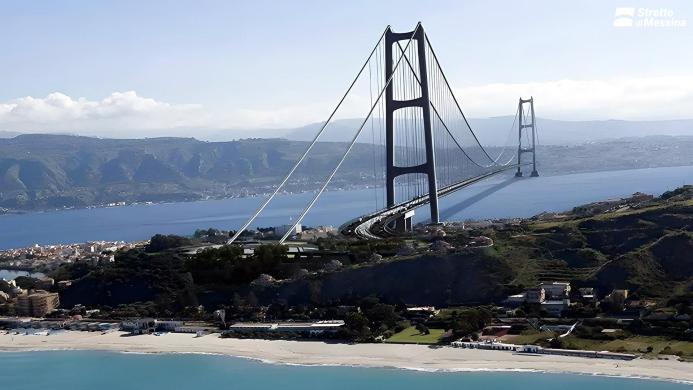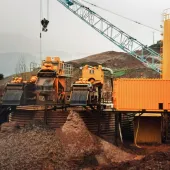Contract signed for world’s longest suspension bridge
Construction of the Strait of Messina Bridge has moved a step closer following the signing of a €10.6 billion (£9.2 billion) contract between Italy’s Stretto di Messina and general contractor Eurolink, led by Webuild.
Approved by Italy’s Interministerial Committee for Economic Planning and Sustainable Development (CIPESS), the definitive design confirms the bridge will feature a 3,300 m suspended central span — surpassing Turkey’s Çanakkale Bridge to become the longest in the world. The deck will carry six traffic lanes, two rail lines and two service corridors, with 72 m sea clearance and seismic resilience well beyond current code requirements.
While the main span is steel, the wider project includes over 40 km of associated works, including:
- New road and rail connections on both sides of the Strait
- Three new underground train stations in Messina
- Cut-and-cover tunnels, viaducts, retaining walls, and interchanges
- A multi-use centre in Calabria with retail and logistics facilities
The scale of these complementary works is significant, with 12 million m³ of earthworks in Sicily and 4.5 million m³ in Calabria—most of it expected to be reused in construction. Foundations, approach viaducts, retaining structures, and tunnel linings will require extensive concrete supply, with opportunities for precast elements, low-carbon mixes, and formwork solutions from across Europe.
“The bridge is just the centrepiece of a much larger investment in Southern Italy’s infrastructure,” said Pietro Salini, CEO of Webuild. “This is a project that connects people, regions and markets, but also creates real engineering opportunity.”
Designed with input from Danish firm COWI and Japanese suspension specialists IHI, the bridge includes 399 m steel towers, 1.26 m diameter cables, and an intelligent structural health monitoring system to support predictive maintenance.
Construction is expected to begin once the CIPESS approval is published in the Official Gazette and final environmental and legal steps are completed. The project forms part of the EU’s TEN-T Scandinavian–Mediterranean Corridor, connecting Sicily to mainland Europe through high-speed rail and logistics infrastructure.







